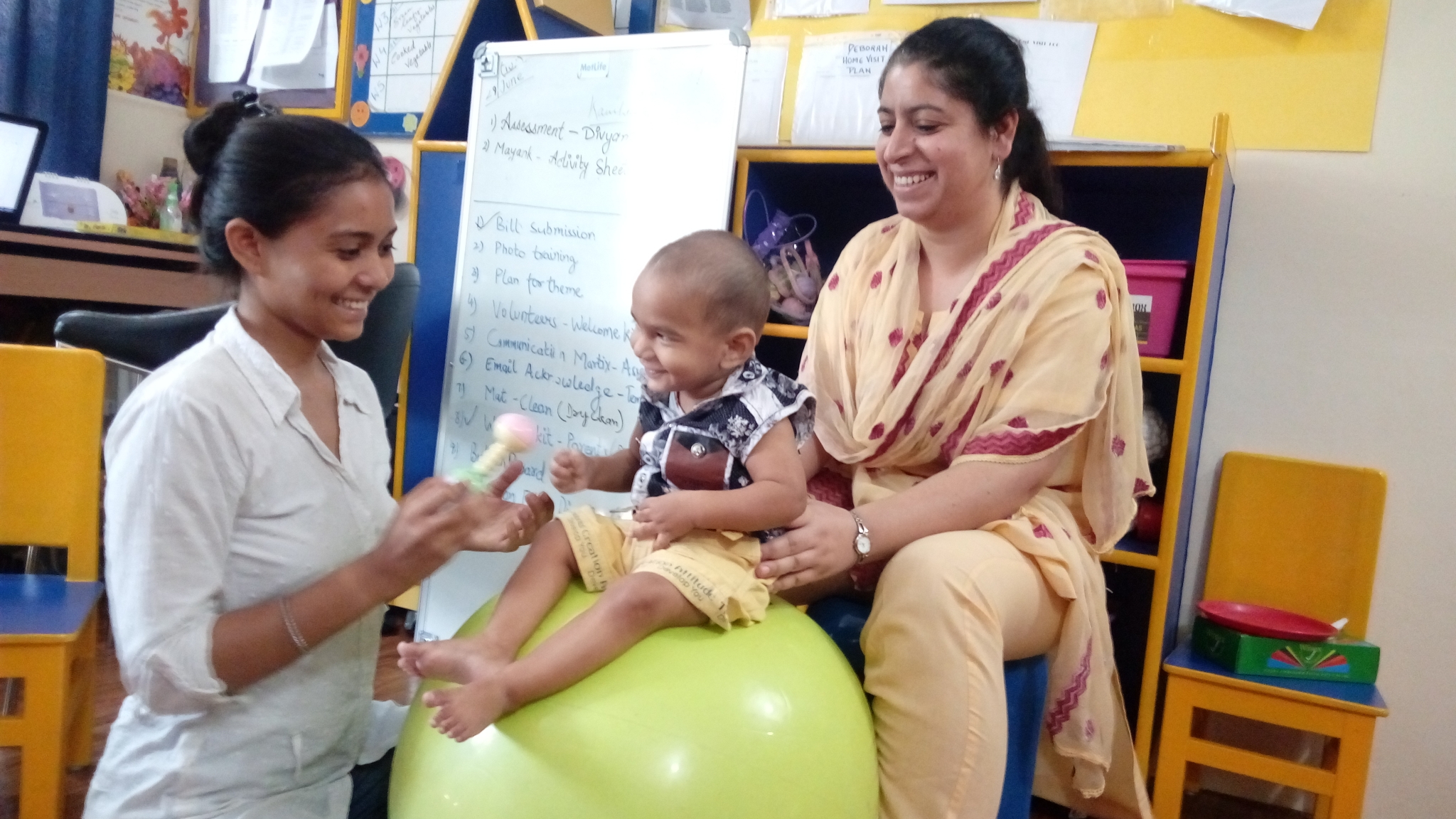This article discusses the ways in which parents and caregivers can work towards the integration of other sensory channels, to help a visually impaired baby complete its missed developmental milestones.
By Supriya Das
Vision is a major source of learning. Most of the information that we acquire about our surroundings is through the sense of vision. Vision is important as it motivates babies towards achieving early milestones. For instance, a baby without any visual disability will learn to smile by seeing the facial expression of the parents. It will orient around shiny or attractive toys kept next to it just by looking at them. While doing so, the baby will make efforts to turn, roll over, reach and grasp the toys.
Apart from vision, there are four other significant senses that help babies in reaching their growth and developmental milestones. These are hearing, touch, taste, and smell. You need to provide them with ample opportunities to learn through these. Following are two major growth and developmental milestones. Ways to help our babies achieve these milestones by the integration of other senses are also detailed:
1. Language, Expression or Communication
Communication begins right from the very beginning. It begins with touch, hearing, and vocalization. Parents play a major role here as they are the first point of contact with the newborn. Here are some practical tips that can encourage early communication:
· Baby talk. Imitate her/his sounds, gurgling, and cooing. Try to have a back and forth silly conversation with your baby. Such loving attention to the baby will not only help it be more responsive but will also form a strong emotional bond between parents and child.
· Sing to your baby. You can sing lullabies, jingles or simple songs while changing a diaper, giving an oil massage or feeding the baby. Giving an oil massage and dressing up the baby, in particular, are excellent activities to make your baby aware about different parts of its body. All of these help in developing vocabulary, word-object association, anticipation, and speech.
· Name and explain objects in the baby’s environment. Name objects or toys that your baby comes into contact with. For instance, each time you apply cream, encourage the baby to touch the tube, squeeze the cream out on the baby’s hands or rub and bring your hands near to its nose to promote smell and association. Don’t forget to keep talking to your baby while doing all of this.
· Name and explain the world beyond your baby’s immediate environment. Name and explain the sounds that are coming from a distance like the horn of a vehicle, bark of a dog on the street, sound of the mixer grinder etc. You may think that your baby is too small to understand these concepts. However, remember that learning does not take place in a day. Your baby needs to experience these over again and again in order to understand and associate. Even babies without vision impairment see many things in their environment before they start to understand. Concept development comes much later.
2. Reaching, rolling and sitting up
· Head control. The first step to reaching, rolling and sitting up is head control. The baby’s neck muscles need to be strong in order to enable self-lifting, holding it straight in the middle and turning it to either side. Babies without vision impairment are usually motivated to gain head control by looking at objects and people in the environment. For babies with vision impairment, a lot of touch and auditory stimuli needs to be provided so that they too can achieve this milestone. Following are some simple activities to encourage this:
a) Lay the baby on your stomach, facing in your direction and talk to the baby. Encourage the baby to find your face.
b) Sit on a chair and lay the baby on your lap facing towards your knees. Sing to your baby and rock.
c) Lay your baby on a bed or a comfortable mat. You can also put a pillow beneath his/her chest to give a lift to the baby’s upper body. Place an audible toy in the front or rattle a toy to keep your baby engaged and motivated.
All these activities are to be done while the baby is in the prone position (chest down and back up). Give ample practice to your baby. Expert support and guidance are always required in order to better understand the baby’s needs, strength and accordingly develop a holistic plan of action.
Believe in your baby. Your confidence today will help your baby to be confident and successful tomorrow.
Some useful links and reading resources:
1.http://www.wonderbaby.org/. Find activities, strategies and suggestions by parents for young children with vision impairment and multiple disabilities.
2. http://www.tsbvi.edu/infants/3293-the-impact-of-visual-impairment-on-development. You can find a lot of information on early childhood and parenting children with vision impairment.
About the Author
Supriya Das is Program Coordinator at the Infant to Toddler Program at Saksham, an NGO that works in the domain of disability. Her area of expertise involves working with children with visual impairment, deaf-blindness, and multiple disabilities. She also works with parents, caregivers, and communities to create awareness and provide training.
At Saksham’s Infant to Toddler Program, early intervention services are provided to children with sensory impairment (age 0-4) and training support to their families. Connect to Saksham on Facebook at https://www.facebook.com/SakshamIndia2003/.
For more information, Supriya can be reached at supriya.das07@gmail.com. She also writes a blog on teaching and learning strategies for children with visual impairment, deaf-blindness and multiple disabilities which can be accessed athttp://igrowup.weebly.com/


Facebook comments